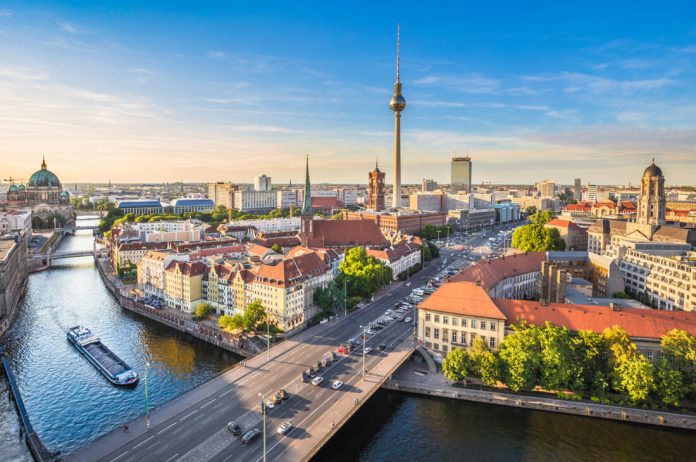Berlin, a city rich with history and transformation, is home to numerous historical sites and monuments that offer a deep dive into its past. From remnants of the Berlin Wall to grand architectural landmarks, these sites provide insight into the city’s tumultuous and fascinating history. Here’s a guide to some of Berlin’s most significant historical sites and monuments.
1. Brandenburg Gate
The Brandenburg Gate (Brandenburger Tor) is one of Berlin’s most iconic landmarks, symbolizing the city’s reunification. Built in the late 18th century as a neoclassical triumphal arch, it originally served as a city gate. Its historical significance was cemented when it became a symbol of both division and unity during the Cold War. Today, it stands as a must-visit monument, located at Pariser Platz and a central point in Berlin’s history.
2. Berlin Wall Memorial
The Berlin Wall Memorial (Gedenkstätte Berliner Mauer) is a poignant reminder of the city’s division during the Cold War. Located on Bernauer Straße, the memorial includes a preserved section of the Wall, an observation tower, and a documentation center. Visitors can explore the history of the Wall, learn about the impact on Berliners, and see original border installations that tell the story of a divided city.
3. The Reichstag Building
The Reichstag Building, home to the German Bundestag (parliament), is a significant historical and political site. Its history dates back to the 19th century and includes the infamous Reichstag fire of 1933. After a major renovation and the addition of a glass dome by architect Norman Foster, the Reichstag now represents transparency in government and offers panoramic views of Berlin from the dome. Guided tours provide insights into its rich history and contemporary role.
4. Checkpoint Charlie
Checkpoint Charlie was one of the most famous border crossings between East and West Berlin during the Cold War. Located on Friedrichstraße, the site features a replica of the original guardhouse and an exhibition documenting the history of the checkpoint and escape attempts. It offers a vivid glimpse into the daily reality of the Berlin Wall era and the Cold War’s tensions.
5. Holocaust Memorial
The Memorial to the Murdered Jews of Europe, commonly known as the Holocaust Memorial, is a somber and powerful tribute to the victims of the Holocaust. Located near Brandenburg Gate, the memorial consists of 2,711 concrete slabs arranged in a grid pattern, creating a disorienting and reflective experience. The underground information center provides additional historical context and personal stories from the Holocaust.
6. Charlottenburg Palace
Charlottenburg Palace (Schloss Charlottenburg) is Berlin’s largest and most opulent palace, reflecting the grandeur of Prussian royalty. Built in the late 17th century, the palace features stunning Baroque and Rococo interiors, beautiful gardens, and a museum with collections of art, porcelain, and historical artifacts. It offers a glimpse into the lives of Berlin’s royal families and the city’s regal past.
7. Berlin Cathedral
The Berlin Cathedral (Berliner Dom) is a majestic Protestant cathedral located on Museum Island. Its history dates back to the 15th century, though the current building was completed in the early 20th century. The cathedral’s stunning architecture, ornate interiors, and panoramic dome views make it a significant historical and cultural site. Visitors can explore its rich history, crypts, and the impressive organ.
8. The Topography of Terror
The Topography of Terror is an outdoor and indoor museum located on the site of the former Gestapo and SS headquarters. The museum documents the atrocities committed by the Nazi regime through exhibitions and historical displays. It offers an in-depth look at the mechanisms of terror and persecution, providing valuable insights into Berlin’s role during the Nazi era.
9. German Resistance Memorial Center
The German Resistance Memorial Center (Gedenkstätte Deutscher Widerstand) is dedicated to those who opposed the Nazi regime. Located in the former headquarters of the German military, the center offers exhibits on the various resistance movements, individual heroes, and the consequences of dissent during the Nazi era. It’s a place of reflection on the courage and sacrifices made by those who resisted tyranny.
10. Bebelplatz and the Berlin State Opera
Bebelplatz is a historic square in Berlin known for its significant role in the city’s intellectual and political life. It is the site of the infamous 1933 book burning where Nazi forces burned books deemed “un-German.” Today, a memorial with an underground empty library commemorates this tragic event. Nearby, the Berlin State Opera (Staatsoper Unter den Linden) offers a glimpse into Berlin’s cultural heritage with its stunning neoclassical architecture and rich musical history.
11. The Soviet War Memorial
Located in Treptower Park, the Soviet War Memorial commemorates the Soviet soldiers who died in the Battle of Berlin. The monument features a grandiose statue of a Soviet soldier, flanked by a vast cemetery and a series of sculptures and reliefs depicting scenes of Soviet victory and sacrifice. It stands as a powerful symbol of the Allied victory over Nazism and the Soviet contribution to the end of World War II.
Berlin’s historical sites and monuments offer a window into the city’s complex past, from its royal heritage to its role in the 20th century’s most significant events. Visiting these sites provides a deeper understanding of Berlin’s evolution and its place in global history.
